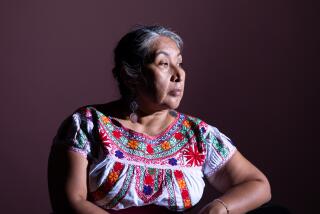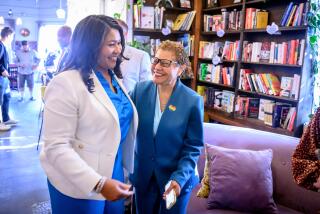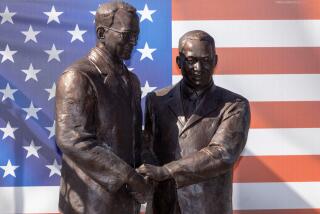L.A.’s mayors: A cast of characters
One was nicknamed “Pinky,” for rather obscure reasons. Another, for lamentably obvious ones, was known as “Horse Face,” and the military buddies of a third called him “Old Chubby Cheeks.”
One was a used-car salesman and a KKK member. A couple were French Canadian. Some were mired in scandal, and some did vast and magnificent things — occasionally, at the same time.
The mayors of Los Angeles have never had the political muscle of their Big Apple and Big Shoulders counterparts. Well into the 20th century, L.A.’s mayors had less power and a smaller salary than the zanjero, the man in charge of the all-important city water system. But by hook and by crook, they brought roads and lands and light and water and waterfronts — and an acid zing of scandal — to civic life.
PHOTOS: A rogues’ gallery of L.A. mayors
L.A.’s mayors now max out at eight years, but many past mayors served only briefly. In his two years in the 1870s, Prudent Beaudry managed to organize a rail line, lay a dozen miles of water pipe and open hospitals. None came close in tenure to Tom Bradley’s two decades, although William Stephens, who was appointed mayor for less than two weeks in 1909, did get elected governor, which Bradley didn’t manage to do.
So who were these men (no woman has yet served) who led Los Angeles? First, some of the rogues.
You’d be hard-pressed to outdo the flagrant Frank Shaw, who protected bootleggers and bordello owners and virtually put the city up for sale. He was the first big-city American mayor ever recalled, in 1938.
PHOTOS: L.A. candidates’ misleading campaign fliers
The man Shaw replaced, John Porter, was as puritanical as Shaw was louche. He offended the French when he refused to drink a champagne toast in Paris because alcohol was illegal back in the good old U.S.A., and he made darned sure the 1932 Summer Olympics were bone-dry. Yet Porter was a rogue in his own fashion: a KKK member during the inter-war period when the Klan was thriving in Southern California.
Damien Marchessault — who believed California should have been split into two states — shot himself in the City Council chambers in 1868, more than two years after he left office. Burdened by his drinking and gambling, he wrote in his suicide note that he was “ashamed to meet my fellow man on the street” — streets that had turned into sinkholes because of his administration’s incompetence.
In the 1850s, Stephen Foster breezily used chain gangs for public works — no employee pension obligations there! — and at a time when L.A. had “vigilance volunteers” instead of actual police, he scrupulously resigned from the mayor’s job so he could lead a lynch mob. Voters obligingly voted him right back in.
When it came to personal peccadilloes, no one made better copy than Charles Sebastian, who was too handsome for his own good and was, for a time, as popular as any movie idol. In 1915, Sebastian leaped from police chief to mayor on the strength of an anti-vice campaign, yet he kept a fancy woman. He gave her a pink silk bathrobe and joy rides in a police car. Sebastian’s wife went to the newspapers with his letters to his paramour, including one he sent while on an out-of-town trip with his spouse. “I wish you could have been along, instead of the Old Haybag,” he wrote.
Such well-behaved candidates we have now.
Los Angeles was always populated by men and women from overseas, from Canada and Mexico, from Europe. Marchessault spoke French. So did Beaudry, whose brother was the mayor of Montreal. Sebastian learned passable Chinese patrolling his beat in Chinatown, and at one council meeting he stepped in to translate for a Chinese businessman who was bewildered by the minutiae of a tax requirement. The last Latino mayor before Antonio Villaraigosa was Jose Cristobal Aguilar, who deserves Angelenos’ eternal blessing for vetoing the City Council when it wanted to privatize L.A.’s water system. But in 1872, he lost to James Toberman, who made an issue of Aguilar’s poor English skills.
The city’s first Jewish mayor was Bernard Cohn, an appointee who served only a couple of weeks in 1878 after the elected mayor died but managed to stay in the headlines for years, once the world learned that he had kept his Jewish wife and three children on one end of town and his Catholic Latina mistress and six more children on the other.
Bradley was L.A.’s first black mayor, the Sphinx of Spring Street, measured and unflappable. But my friend Alison Sotomayor, who’s working on a documentary about Bradley, has heard story after story of Bradley as a practical joker and as a jazz lover who cranked up the volume in his office on weekends. And then there’s the story of how Bradley, as the newly minted mayor, faced neo-Nazi picketers chanting “White power! White power!” at his 1973 inauguration and declared puckishly: “I is the mayor.”
What have we lost in the mayor’s office? Vintners and seafarers, rakehells and crusaders, socialists and ranchers. Characters. And what have we gained? We’ll be one step closer to finding out Wednesday morning.
Follow Patt Morrison on Twitter @pattmlatimes
More to Read
A cure for the common opinion
Get thought-provoking perspectives with our weekly newsletter.
You may occasionally receive promotional content from the Los Angeles Times.











